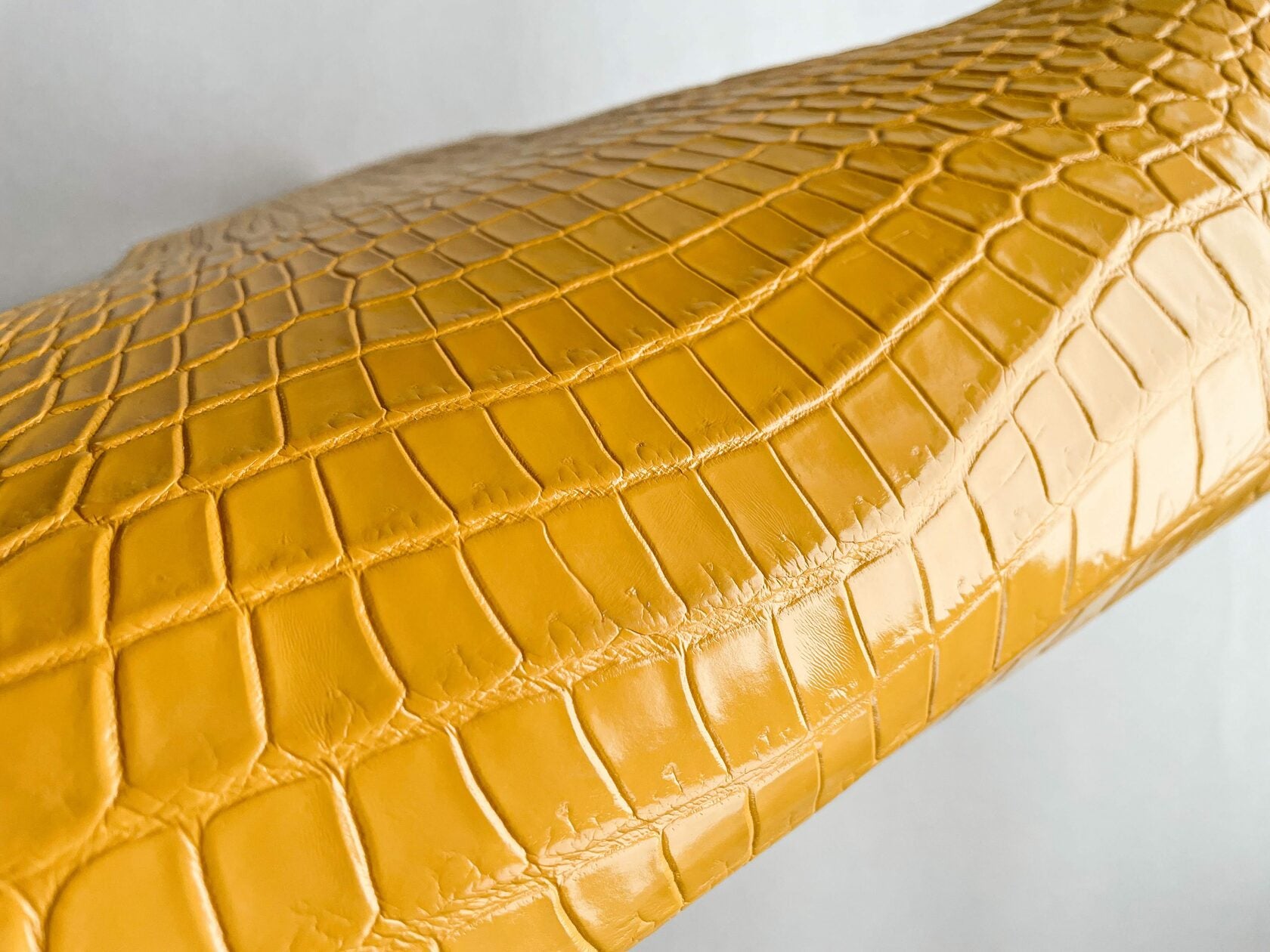Article: 🥇🥈🥉 Grading (Grade) of Crocodile Leather🐊

🥇🥈🥉 Grading (Grade) of Crocodile Leather🐊
Today, we will discuss an important topic, as it is the basis of pricing for whole crocodile skins.
I have already written that whole skins are measured exclusively in centimeters in width across the belly, and the price is always calculated and indicated per 1 centimeter across the belly.
One of the factors that affects the price per cm is the grade (quality) of the skin.
The grade is determined primarily by the number and location of natural flaws (defects) on the skin. There are five grades: the 1st and 5th are quite easy to determine.
The 1st grade is the highest one, and these are often farm-raised skins.
The 5th grade is typically skins that have been damaged too much in the production process, or that have been used for experimentation, such as having a high percentage of defects, with large tears and holes.
Factories use the quadrant method globally to determine the 2nd, 3rd, and 4th grades.
A quadrant of a plane (from the Latin quadrans or quadrantis "fourth part, quarter") is any of the four areas (angles) into which the plane is divided by two mutually perpendicular lines taken as coordinate axes.
The skin is evaluated ONLY on its belly. The tail and neck are not involved in the evaluation. The belly is divided into four quadrants (sectors), each of which is evaluated as follows 👇:
No defects in any quadrant is a 1st grade skin.
Defects:
- in the one quadrant: 1/2 grade;
- in two quadrants: 2/3 grade;
- in three quadrants: 3/4 grade;
- in all four quadrants: 4/5 grade.
It is a very simplified grading table, as the evaluation is much more subjective, and each skin has unique characteristics. In the tanning process, leather can be graded 2-3 times: in raw hides, in tanning, and in a ready-to-sell form — after all stages of production.
Once again, neck and tail defects are not taken into account in the assessment of the grade of the whole skin. However, farm-raised skins have a stricter grading standard, as they are much more expensive to purchase and rare compared to wild ones ☝️.
Each skin is unique, and there is no other one like it in the world 😌